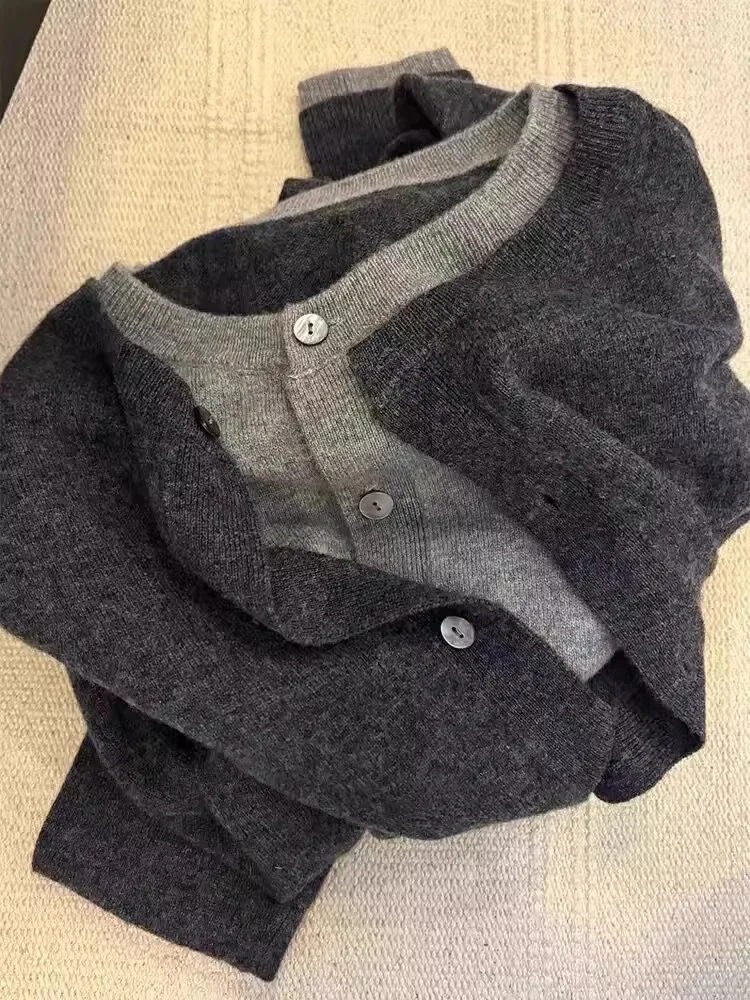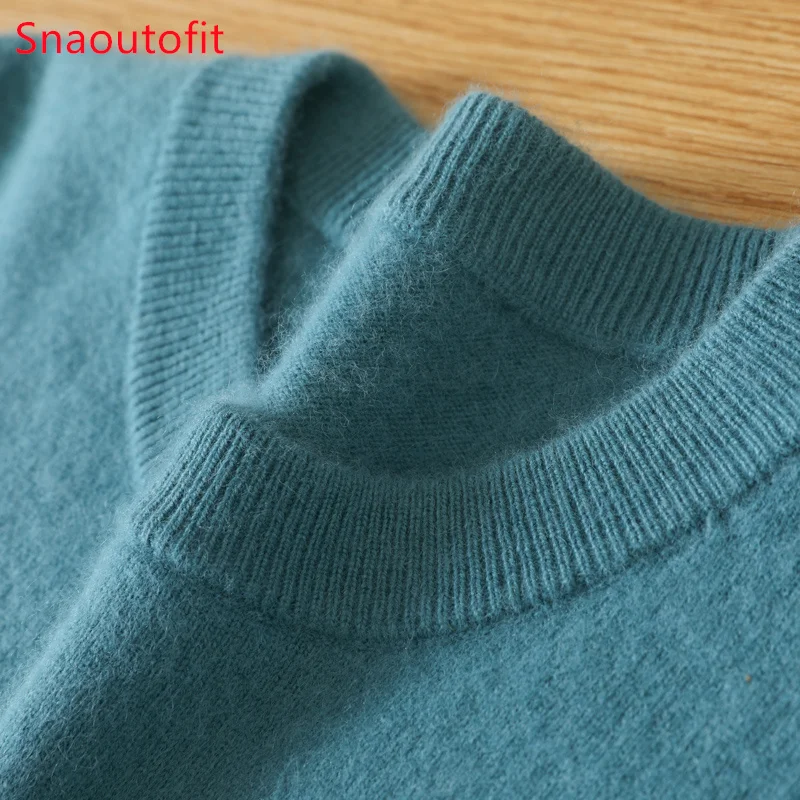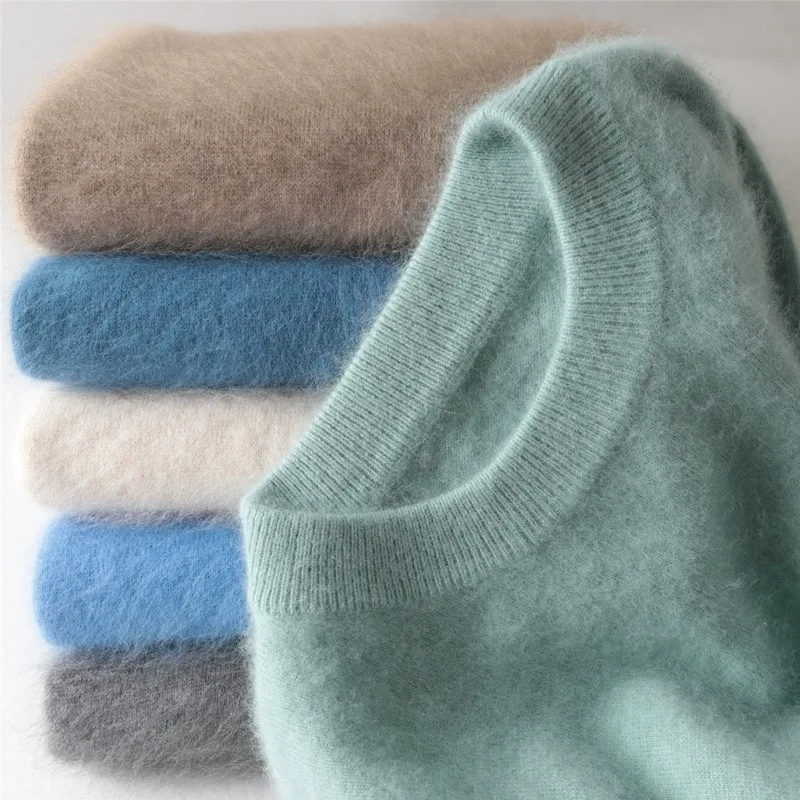Understanding Cashmere’s Delicate Nature
Cashmere is one of the most luxurious and sought-after natural fibers in the world. This premium material comes from the soft undercoat of cashmere goats and is prized for its incredible softness, lightweight warmth, and elegant drape. What makes cashmere truly special is its fine fiber structure—with diameters typically measuring under 16 microns (for comparison, human hair averages 70-100 microns). This exceptional fineness is what gives cashmere its signature softness and lightweight warmth.
However, this same delicacy that makes cashmere so desirable also makes it incredibly vulnerable during the care process, particularly when drying. Unlike sturdier wool fibers that have scales that lock together when wet, cashmere fibers become especially fragile when saturated with water. The ultimate guide to cashmere care and washing explains why special attention is required throughout the entire cleaning process.
When wet, cashmere fibers can:
– Stretch irreversibly if handled improperly
– Lose their natural elasticity when exposed to heat
– Become misshapen or distorted under their own weight
– Mat together and potentially felt if agitated
Understanding the quality of high-grade cashmere helps explain why proper drying techniques aren’t just recommendations—they’re essential for preserving your investment. Improper drying can lead to permanent damage including shrinkage, stretching, distortion, and loss of that luxurious softness that makes cashmere so special in the first place.
The Golden Rule: Always Lay Flat to Dry
If there’s one non-negotiable rule when it comes to cashmere care, it’s this: always lay your cashmere items flat to dry. This isn’t merely a suggestion—it’s an absolute necessity for maintaining the integrity of your garment.
When cashmere is wet, the weight of the water dramatically increases the overall weight of the garment, sometimes by two or three times. If hung to dry, gravity pulls this extra weight downward, causing the fibers to stretch vertically. Unlike more resilient fabrics, once cashmere fibers are stretched beyond their natural elasticity, they remain that way permanently—resulting in sleeves that grow too long, hems that hang unevenly, or shoulders that droop.
The physics is straightforward: distributing the weight of the wet garment across a flat surface allows it to maintain its original dimensions as it dries. Every subsequent technique we’ll discuss builds upon this foundational principle of flat drying.
Even the most careful washing can be undone by improper drying. Proper flat drying is the cornerstone of preventing cashmere shrinkage and maintaining the garment’s intended shape and dimensions.
Essential Pre-Drying Preparation
Before you begin the actual drying process, proper preparation is crucial to remove excess water without damaging the delicate fibers:
After washing, never wring or twist your cashmere item. This can distort the shape and damage the fibers permanently.
Instead, gently press the garment against the side of your sink or basin to remove some water. Use a light touch—the goal is to let gravity do most of the work.
The “towel roll” method is the gold standard for removing excess moisture:
– Lay a clean, dry, light-colored towel flat on a surface
– Place your cashmere item flat on the towel
– Starting at one end, roll the towel with the garment inside (like a jelly roll)
– Apply gentle, even pressure along the roll to let the towel absorb water
– Unroll and remove your garmentFor extremely delicate items, try the pressing method:
– Lay the garment between two clean towels
– Press gently with flat palms to transfer moisture to the towels
– Replace wet towels as needed
This preliminary step is essential because removing excess water significantly reduces drying time and helps prevent issues with uneven drying. Proper home washing techniques for cashmere should always be followed by these gentle water removal methods.
Remember: The gentler you are during this preparation phase, the better your cashmere will maintain its shape and softness through the drying process.
Creating the Optimal Drying Surface
The surface you choose for drying your cashmere is just as important as the techniques you use. Creating an ideal drying environment helps ensure even drying and proper shape retention.
An optimal drying surface should be:
– Clean and dust-free to prevent transfer of dirt or lint
– Flat and level to maintain proper garment dimensions
– In a location away from direct sunlight and heat sources
– In a well-ventilated area with good air circulation
Suitable options for drying surfaces include:
Mesh drying racks: These are ideal as they allow air to circulate from all directions, including underneath. Look for racks designed specifically for sweaters.
Clean towels on a flat surface: Lay clean, dry towels on a table, countertop, or the floor. This works well but may require changing towels if they become too damp.
Dedicated sweater drying mats: These specially designed mats often have features that enhance airflow while supporting the garment’s shape.
Before placing your cashmere on any surface, ensure it’s completely clean to prevent color transfer or odor absorption. If using a towel, choose white or light-colored ones to avoid dye transfer to your garment.
Many of our customers find that investing in a proper drying setup helps extend the life of their premium cashmere sweaters and maintains their luxurious feel wash after wash.
Proper Positioning and Reshaping Techniques
The way you position and reshape your cashmere while damp determines how it will look when dry. This critical step requires attention to detail but pays dividends in maintaining your garment’s proper dimensions and appearance.
When placing your damp cashmere on the drying surface:
1. Gently unfold the garment and lay it flat, taking care not to pull or stretch the fabric.
2. Carefully reshape the item to its original dimensions, paying special attention to:
– Straightening the hemline and cuffs
– Aligning the shoulder seams
– Positioning sleeves parallel to the body of the garment
– Ensuring symmetry on both sides
For specific garment types:
– Sweaters and pullovers: Focus on squaring the shoulders and making sure the hemline is even.
– Cardigans: Button the garment first to ensure proper alignment before reshaping.
– Turtlenecks: Gently shape the neck area without stretching, ensuring the cashmere turtleneck maintains its proper form.

For areas that tend to stretch out:
– Use your fingertips to gently push stretched areas back to their original dimensions
– Create a slight “scrunch” in areas like sleeves that may have elongated
– Pay extra attention to ribbed areas, which can lose their elasticity if not properly reshaped
If you’re unsure about the garment’s original dimensions, try referencing a similar dry garment for comparison. Taking a few extra minutes during this reshaping process can make the difference between a cashmere piece that looks brand new and one that appears misshapen or worn.
Optimizing Air Circulation for Even Drying
Proper air circulation is a critical but often overlooked aspect of the cashmere drying process. Good airflow ensures even drying, prevents mustiness, and reduces overall drying time.
To optimize air circulation around your drying cashmere:
Position the drying surface in a well-ventilated area of your home. Avoid closets or cramped spaces where air becomes stagnant.
Allow adequate space between multiple garments if drying more than one piece. Each cashmere cardigan needs at least 6-8 inches of space from other items to ensure proper air circulation.
Flip the garment gently every 4-6 hours. This promotes even drying on both sides and prevents moisture from becoming trapped against the drying surface.
Consider using a fan on the lowest setting to improve air movement. Position it to circulate air around (not directly at) the garment, keeping it at least 3 feet away to prevent any direct air pressure on the delicate fibers.
Remove any nearby sources of moisture that could slow the drying process, such as houseplants or damp towels.
If you’re in a high-humidity environment, you might consider using a dehumidifier in the room to help extract moisture from the air. This can significantly reduce drying times without compromising the integrity of the fibers.
Remember that patience is essential—rushing the drying process with excessive airflow or heat can damage the delicate structure of the cashmere fibers.
Understanding Cashmere Drying Timeframes
One of the most common mistakes in caring for cashmere is underestimating how long proper drying takes. Setting realistic expectations helps prevent the temptation to rush the process.
Typically, cashmere items require 24-48 hours to dry completely, depending on several factors:
Garment thickness: Heavier knits like brushed cashmere sweaters naturally take longer to dry than lightweight pieces.
Ambient humidity: The moisture content in your environment significantly affects drying time. Higher humidity levels mean longer drying times.
Air circulation: Better airflow around the garment speeds up the drying process.
Effectiveness of pre-drying water removal: How thoroughly you removed excess water initially impacts total drying time.
To determine if your cashmere is completely dry, perform a gentle touch test. Press your hand against different areas of the garment, paying special attention to thicker sections like seams, collars, and cuffs. If you detect any coolness or dampness, the garment needs more drying time.
Rushing and wearing or storing cashmere before it’s completely dry can lead to unpleasant odors, fiber damage, or even mildew growth. Remember that patience during this process preserves the luxury and longevity of your cashmere investment.
Critical Warnings: What Never to Do When Drying Cashmere
When it comes to drying cashmere, certain practices can cause immediate and irreversible damage. These methods should be avoided without exception:
Never Use a Tumble Dryer
Even on the gentlest, coolest settings, tumble dryers create friction between fibers that causes felting—a process where fibers permanently mat together. The heat and agitation also lead to dramatic shrinkage and fiber damage. The result is a garment that’s smaller, stiffer, and lacks the luxurious softness that defines cashmere.
Never Hang Wet Cashmere
When cashmere is wet, it becomes significantly heavier. Hanging a wet cashmere garment causes it to stretch dramatically under its own weight. This stretching is permanent and will result in distorted shoulders, elongated sleeves, and an uneven hemline that cannot be corrected.
Avoid All Direct Heat Sources
Never position wet cashmere near:
– Radiators or heating vents
– Direct sunlight
– Hair dryers
– Clothes irons while damp
Direct heat causes cashmere fibers to contract unevenly, resulting in shrinkage and a harsh, cardboard-like texture. The extreme temperature change can also shock the fibers, reducing their natural elasticity.

Never Wring or Twist
Wringing or twisting wet cashmere distorts the shape of the garment and damages the fiber structure. These actions cause fibers to become misaligned and can lead to permanent creasing or distortion.
Understanding these prohibitions helps prevent cashmere pilling issues and other forms of damage. Each of these “don’ts” can cause immediate damage that’s impossible to reverse, potentially ruining your valuable cashmere item in a matter of minutes.
Post-Drying Care for Perfect Cashmere
Once your cashmere is completely dry, a few final steps help restore its perfect appearance and prepare it for wear or storage:
For light creases that may have developed during drying:
1. Use a handheld steamer held at least 6 inches away from the fabric to gently release wrinkles
2. Allow the steamed areas to dry completely before handling or storing
For more stubborn wrinkles:
1. Set an iron to the lowest wool setting (no steam)
2. Place a clean cotton pressing cloth between the iron and cashmere
3. Gently press—don’t rub—the iron over the cloth
4. Allow the garment to cool completely before moving
For proper storage:
1. Always fold cashmere—never hang it, as hanging causes shoulders to stretch over time
2. Place folded items in a breathable cotton bag or box
3. Add cedar blocks (not mothballs) to deter pests
4. Store in a cool, dry place away from direct sunlight
Cashmere Wrap Sweaters, Women's Cashmere Pullovers
$75.89 Select options This product has multiple variants. The options may be chosen on the product pageCashmere Cable Knit Sweaters, Women's Cashmere Pullovers
Price range: $111.82 through $112.93 Select options This product has multiple variants. The options may be chosen on the product pageCropped Cashmere Sweaters, Women's Cashmere Pullovers
$155.77 Select options This product has multiple variants. The options may be chosen on the product page- Price range: $102.02 through $109.37 Select options This product has multiple variants. The options may be chosen on the product page
Oversized Cashmere Sweaters, Plus Size Cashmere Sweaters, Women's V-Neck Cashmere Sweaters
$136.87 Select options This product has multiple variants. The options may be chosen on the product page- Price range: $108.11 through $130.03 Select options This product has multiple variants. The options may be chosen on the product page
These final touches help maintain the perfect appearance of your cashmere. Following the complete cashmere sweater care instructions from washing through storage ensures your luxury items remain beautiful for years to come.
Quick Solutions for Common Cashmere Drying Problems
Even with careful attention, you may occasionally encounter issues during the cashmere drying process. Here are solutions for common problems:
Problem: Uneven drying with some areas still damp
Solution: Reposition the garment to expose damp areas to better air circulation. Avoid the temptation to use heat. For thick knits like women’s cashmere cardigans, flip more frequently during drying.
Problem: Cashmere taking too long to dry
Solution: Ensure your drying area has adequate ventilation. Try moving to a less humid room or using a dehumidifier nearby. You can also try replacing the towel underneath with a dry one to absorb additional moisture.
Problem: Slight stretching occurred during drying
Solution: While the garment is still slightly damp, gently reshape the stretched areas by pushing the fibers back together with your fingertips. Allow to finish drying in the reshaped position.
Problem: Cashmere accidentally exposed to heat
Solution: If minimal exposure occurred and the garment hasn’t fully dried yet, immediately move it to a proper flat drying surface and reshape. If significant shrinkage has already occurred, professional restoration may be your only option.
Problem: Indentations from drying surface visible on garment
Solution: Light steaming can help remove these impressions. For textured knits, gently brush with a cashmere comb to restore the surface appearance.
Remember that prevention is always easier than correction when it comes to cashmere care. Following proper drying techniques from the start helps avoid these common issues.
Frequently Asked Questions About Drying Cashmere
Q: Can I use my dryer’s “air dry” or “no heat” setting for cashmere?
A: No. Even without heat, the tumbling action causes friction between fibers, leading to felting and pilling. Always air dry cashmere flat.
Q: Is it safe to dry cashmere outdoors?
A: Generally not recommended. While the fresh air can be beneficial, outdoor drying exposes cashmere to direct sunlight, potential pollen or dust, and unpredictable weather. If you must dry outdoors, choose a shaded area and bring the item inside before evening humidity rises.
Q: How can I dry cashmere in a high-humidity environment?
A: Use a dehumidifier in the drying room, ensure good air circulation with fans, and flip the garment more frequently. You may need to extend drying time and be particularly vigilant about complete dryness before storing.
Q: Can I speed up the drying process safely?
A: Marginally. The most effective way to reduce drying time is thorough but gentle water removal using the towel method before laying flat to dry. Using fans to improve air circulation can help, but keep them at a distance to prevent direct air pressure on the garment.
Q: Should I block my cashmere while drying like other knitted items?
A: Unlike hand-knitted items that benefit from blocking with pins, commercial cashmere should simply be gently reshaped by hand. Pinning can create visible holes in the delicate fabric.

Q: How do I dry cashmere accessories like scarves or gloves?
A: Use the same flat drying principles, but these smaller items may dry faster than larger garments. The choice between hand washing and dry cleaning cashmere should be based on the item’s size and delicacy.
The Relationship Between Washing and Drying Cashmere
The drying process for cashmere begins well before the garment leaves the washing basin. How you wash your cashmere directly impacts how effectively it will dry:
Water temperature during washing significantly affects drying time. Cooler water temperatures (below 85°F/30°C) help the fibers maintain their structure, which allows them to release water more efficiently during the drying process.
The detergent you choose also matters tremendously. Harsh detergents can break down the natural oils in cashmere fibers, making them more absorbent and thus slower to dry. Gentle, pH-neutral cleaners specifically designed for cashmere or wool leave the fibers in better condition to release moisture.
Rinsing thoroughly is perhaps the most crucial pre-drying step. Any detergent residue left in the fibers will attract and hold moisture, dramatically increasing drying time and potentially causing odor issues.
For optimal results, the comprehensive guide to cashmere care recommends gentle hand washing with minimal agitation, followed by thorough rinsing in cool water before beginning the drying process. This preparation sets the stage for efficient, effective drying that preserves your cashmere’s luxurious qualities.
Seasonal Considerations for Drying Cashmere
The environment in which you dry your cashmere significantly impacts both drying time and results. Adapting your approach based on seasonal conditions helps achieve optimal outcomes:
Winter considerations:
– Indoor heating creates dry air that can speed drying but potentially over-dry fibers
– Position drying cashmere away from direct heat sources
– Consider using a humidifier if your heating system creates extremely dry air
Summer considerations:
– Air conditioning reduces humidity, potentially speeding drying times
– High humidity environments require additional air circulation
– Fans become more important for consistent airflow
For extremely humid environments (70%+ humidity):
– Use a dehumidifier in the drying room
– Flip garments more frequently (every 2-3 hours)
– Extend expected drying times by 12-24 hours
– Be particularly thorough when checking for complete dryness
For extremely dry environments (below 30% humidity):
– Monitor cashmere carefully to prevent over-drying, which can make fibers brittle
– Consider slightly shorter drying times
– Keep men’s cashmere pullovers and other items away from direct airflow from heating vents
Adapting your drying techniques to your current environment helps ensure consistent results regardless of the season.
Why Proper Drying Extends Your Cashmere’s Lifespan
The care you invest in drying your cashmere properly pays dividends far beyond the immediate appearance of your garment. Proper drying is perhaps the single most important factor in extending the lifespan of your luxury cashmere pieces.
When dried correctly, cashmere fibers maintain their natural elasticity and alignment. This preservation of fiber structure means your garment retains its luxurious softness, beautiful drape, and dimensional stability through many seasons of wear. Properly dried cashmere maintains its loft—that airy quality that makes it so lightweight yet warm.
Conversely, improper drying techniques create permanent damage at the fiber level. Heat exposure causes fibers to contract and become brittle. Hanging causes stretching that permanently misaligns fibers. Both reduce the garment’s ability to return to its original shape after wearing.
From an investment perspective, the extra time spent properly drying your cashmere yields significant returns. Quality cashmere pieces can last decades when properly cared for, developing an increasingly soft hand while maintaining their shape and appearance. Taking the time to prevent moth damage and follow proper drying protocols means your Estate Cloth cashmere pieces remain beautiful investments rather than temporary indulgences.
The luxury of cashmere lies not just in its initial softness but in its remarkable durability when treated with appropriate care. The drying techniques outlined in this guide help ensure your cashmere remains an enduring pleasure to wear season after season.







